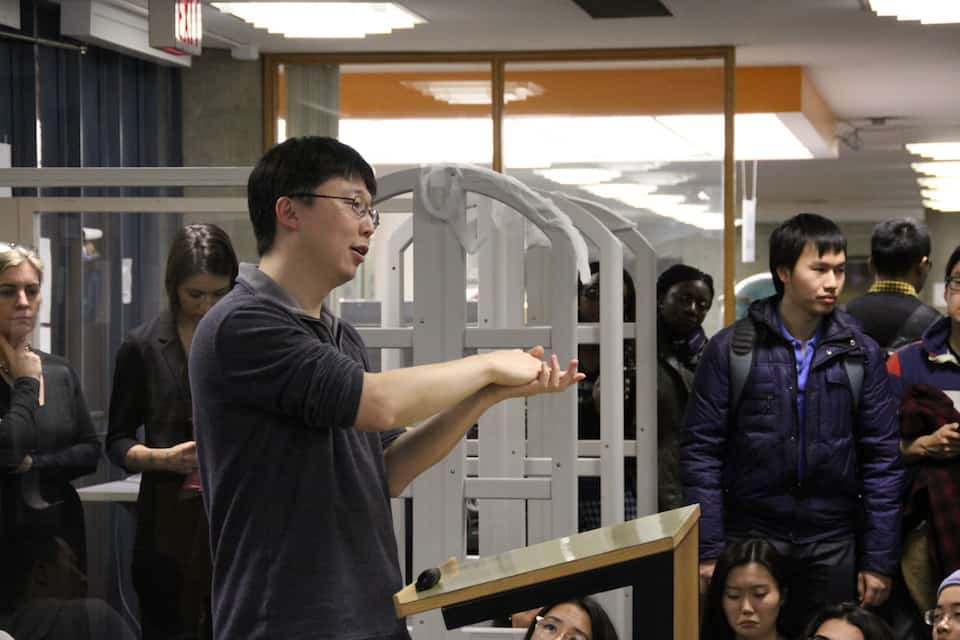In 2012, the naturally occurring Cas9 enzyme was shown to be able to edit DNA sequences from a number of organisms by researchers at the Zhang Lab at MIT.
While this new powerful genetic editing tool holds great promise for treating an array of genetic disorders, such as HIV, cancers, and lesser known disorders like Duchenne muscular dystrophy; it also raises a number of ethical questions. When do we allow DNA editing in humans? To what extent will we allow for DNA editing to modify our genomes? Are we getting in the way of evolution, and what dangers could modifying our DNA bring about? Most importantly, how will these changes to our genome get passed down to our offspring?
Due to these important and deeply controversial questions, scientists worldwide agreed to a moratorium on CRISPR-Cas9 gene-editing research in humans. For now, scientists have agreed to allow for clinical gene-editing research in all human cells, but have banned research that edits the germline — a scientific term for the DNA that is passed on from parent to offspring.
There is merit to this stance. The state of CRISPR-Cas9 research is still in its infancy, and needs to be perfected before it can be used in human therapeutics, and must pass a number of tests before it can be used to edit the human germline. CRISPR-Cas9 is not the first technology capable of editing DNA — its predecessors were zinc finger nucleases and TALENs, among other technologies — but so far it is the most promising. That said, biological techniques are not foolproof, and the CRISPR-Cas9 is not immune to off-target effects in the genome.
To put this in perspective, imagine that someone designs a computer program to edit the operating system on your computer. The program used is usually effective and edits the code it intends to. Although every once in a while, it modifies the code of something you need to function (for instance, Microsoft Word). But unlike a computer program or operating system, we cannot simply uninstall and then reinstall the program with the defective code. Instead, we are stuck with something dysfunctional, and the possibility that the defective code will actually interfere with other things that previously were working. To extend the analogy now, we’re left with a computer that cannot do basic word processing, and, scariest of all, cannot be fixed. To make matters worse, off-target effects in germline editing will likely be permanent not only in a single generation, but for generations to come.
The difficulty with CRISPR-Cas9 is that it holds so much promise, that researchers around the world are all racing to incorporate the technology into their work. As this race gets more competitive, the likelihood that someone will attempt something dangerous in the process of conducting ground breaking research increases. Thus the ban on germline editing.
Although CRISPR-Cas9 is possibly very dangerous, research cannot and should not be stopped. If we’re able to solve some of humanity’s most pressing concerns, such as HIV/AIDS, then we have a moral obligation to try. For that reason, the CRISPR-Cas9 gene-editing system might be the latest biomedical advancement to offer serious hope to millions. As long as scientists worldwide ensure that they conduct their research with caution and within certain limits, gene-editing research will be able to make significant advancements safely.
Recently, The Varsity had a chance to attend a discussion with Dr. Feng Zhang of the Zhang Lab, hosted by the Neuroscience Association for Undergraduate Students.
At the event, one student asked, the researcher about his opinion on using the CRISPR-Cas9 system to edit the germline. Dr. Zhang replied, stating that the importance of germline editing varies between groups of people, such as potential parents and policy-makers. As a researcher, he suggested that “we are not ready to use this [CRISPR-Cas9 gene-editing] for medical treatment, because there are issues with specificity and efficiency,” citing the possibility of off-target effects. He highlighted the possibility of off-target effects causing other disorders, like cancer.
While the CRISPR-Cas9 system is undoubtedly one of the greatest biomedical breakthroughs of the past fifty years, if not the past century, it is not ready for public consumption. While nearly everyone wants this technology to be perfected, it cannot and should not be used until it is. When that day comes, the possibilities for treating disease and improving lives will be endless. It is for that reason, that CRISPR-Cas9 and gene-editing research needs to keep moving at its current pace, while being constrained by a few necessary rules.


